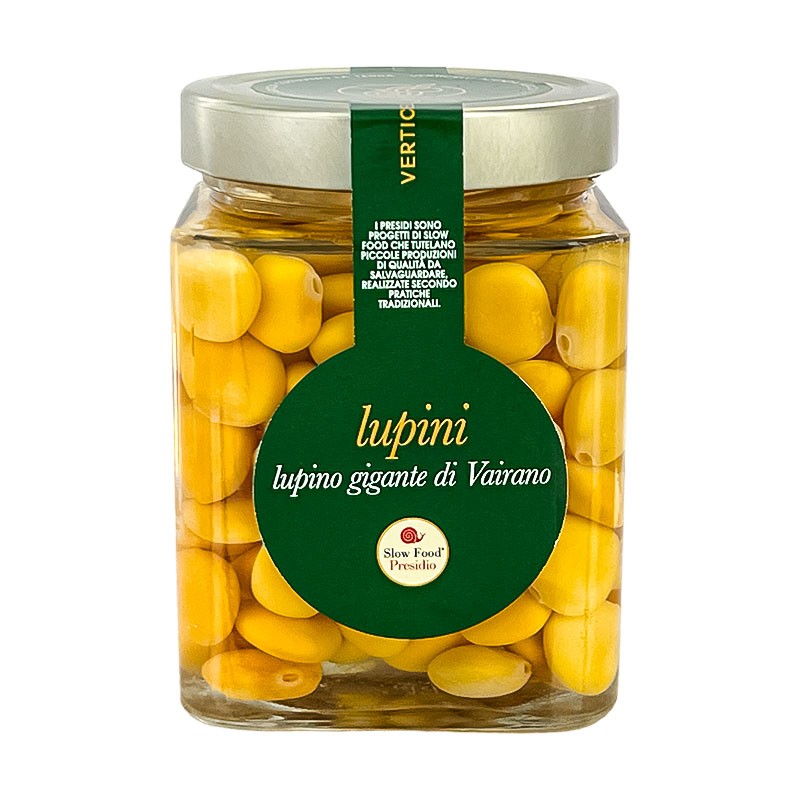





Lupino Gigante di Vairano is a Slow Food Presidium, which indicates the very high quality of the product. Simply preserved in a solution of water and salt.
Lupin, water, salt, antioxidant E330
The giant lupin of Vairano reaches up to 1.5 cm in diameter!
Verticelli's lupins are strictly preserved in glass jars in sea water, without any preservatives. The bittering process is still traditional: the dried legumes are soaked in water for 12 hours, then boiled, then soaked again in water and salt for 5 days, with daily rinsing to eliminate the bitterness for good.
It may interest you
The giant lupin of Vairano is a variety of legume that is recognised as an excellent snack to accompany an aperitif. It is recognised as a traditional agri-food product and a SlowFood Presidium product. It is called 'giant' because its seeds are larger, its shape is still round (one and a half centimetres in diameter) but its colour is a little lighter, tending towards beige.
The seeds are found in the long, flattened fruits of a plant with white flowers and dark green leaves; it flowers from mid-May to the end of June because its growth prefers very high temperatures.
In July the plants are cut and uprooted and left to dry in the field, then threshed, preferably between night and early morning to prevent the pods from opening.
To be eaten, they are soaked in cold water for a day, boiled for about two minutes and left in a brine solution for three days.
In the kitchen they are used as a snack, often accompanied by a good glass of wine (discover our selection of wines), but in the past they were eaten as a coffee substitute and became famous thanks to the lupin trade in Verga's "I Malavoglia". Today there are several tasty dishes based on lupins:
This type of lupin is rich in nutrients such as vitamins A, B and C, omega 3 and 6 and minerals such as zinc, iron, calcium, potassium and manganese. They are also excellent for the metabolism of fats, carbohydrates and proteins.